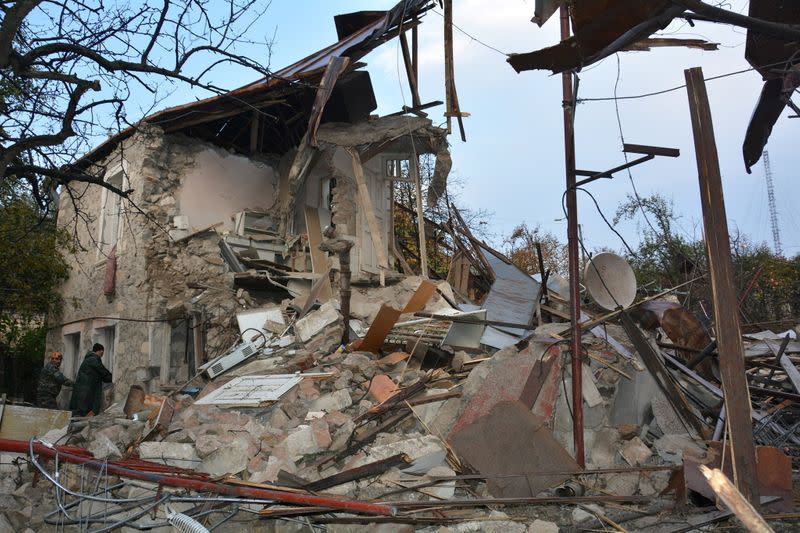Nagorno-Karabakh: old tensions behind conflict

(Reuters) - Russian peacekeeping forces deployed to the mountain enclave of Nagorno-Karabakh on Tuesday as part of a ceasefire deal designed to end six weeks of heavy fighting between Azerbaijan and ethnic Armenian forces.
Under the deal, Azerbaijan will keep territorial gains made in the fighting, including the enclave's second city of Shusha, which Armenians call Shushi. Ethnic Armenian forces must give up control of a slew of other territories between now and Dec. 1.
Here are some key facts about the territory and its history.
- Nagorno-Karabakh is a mountainous and heavily forested patch of land that sits inside the territory of the former Soviet republic of Azerbaijan.
- Under international law, Nagorno-Karabakh is recognised aspart of Azerbaijan, but the ethnic Armenians who make up thevast majority of the population reject Azeri rule. They havebeen running their own affairs, with support from Armenia, sinceAzerbaijan's troops were pushed out in a war in the 1990s.
- New fighting that broke out on Sept. 27 quickly became thedeadliest since the 1990s. Previous ceasefires brokered by Russia and the United States failed to hold.
- The conflict over Nagorno-Karabakh has risked dragging in the big regional powers, Russia and Turkey, and destabilising the South Caucasus region, an important corridor for pipelines carrying oil and gas. Moscow has a defence alliance with Armenia, while Ankara backs its ethnic Turkic kinin Azerbaijan.
- After big Azeri territorial gains, Armenia's Prime Minister Nikol Pashinyan said on Nov. 10 that he agreed to the new ceasefire under pressure from his own army, which said all military action in Nagorno-Karabakh had stopped.
HISTORY
- Long-standing ethnic tensions in the region betweenChristian Armenians and their mainly Muslim neighbours flared inNagorno-Karabakh - then part of the Soviet republic of Azerbaijan - in the late 1980s.
- As the Soviet Union began to break up, it became apparentthat Nagorno-Karabakh would come under the direct rule of theAzeri government. The ethnic Armenians did not accept that.
- Sectarian conflict erupted, escalating into war in 1991between Azerbaijan's troops and Nagorno-Karabakh's ethnicArmenian forces, backed by Armenia. About 30,000 people werekilled and many more were displaced.
- Authorities in Nagorno-Karabakh declared independence thatyear but it was not recognised internationally, leaving theethnic Armenian administration there in a state of legal limboand under blockade from Azerbaijan's government.
- By 1994, when an internationally brokered ceasefire wasagreed, ethnic Armenians controlled almost all ofNagorno-Karabakh, plus some surrounding Azeri districts thatgave them a buffer zone and land bridge connecting their regionto Armenia.
- Azerbaijan vowed to take back control over the territory,using military force if necessary.
- International efforts over the years to find a lasting peace settlement, involving France, the United States and Russia as mediators, failed to clinch a deal.
- Under the new ceasefire deal, Russian peacekeepers will stay in place for at least five years, expanding Moscow's military footprint in the region. President Vladimir Putin said they would be deployed along the frontline in Nagorno-Karabakh and in a corridor between the region and Armenia.
(Reporting by Moscow bureau; Editing by Gareth Jones and Mike Collett-White)


